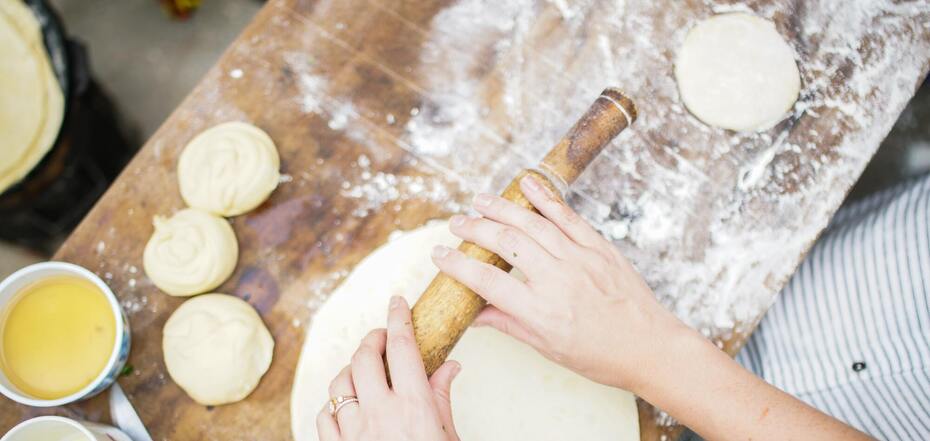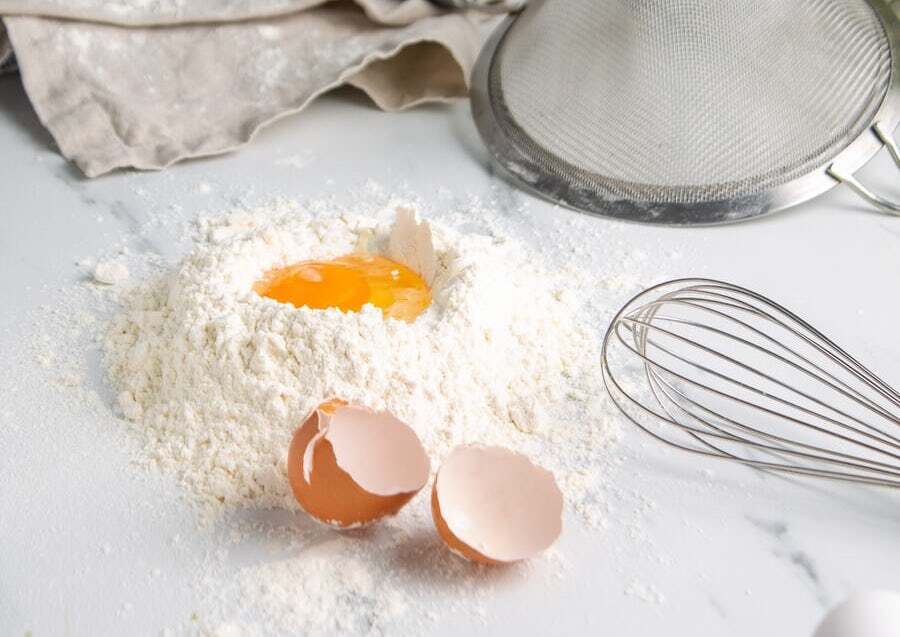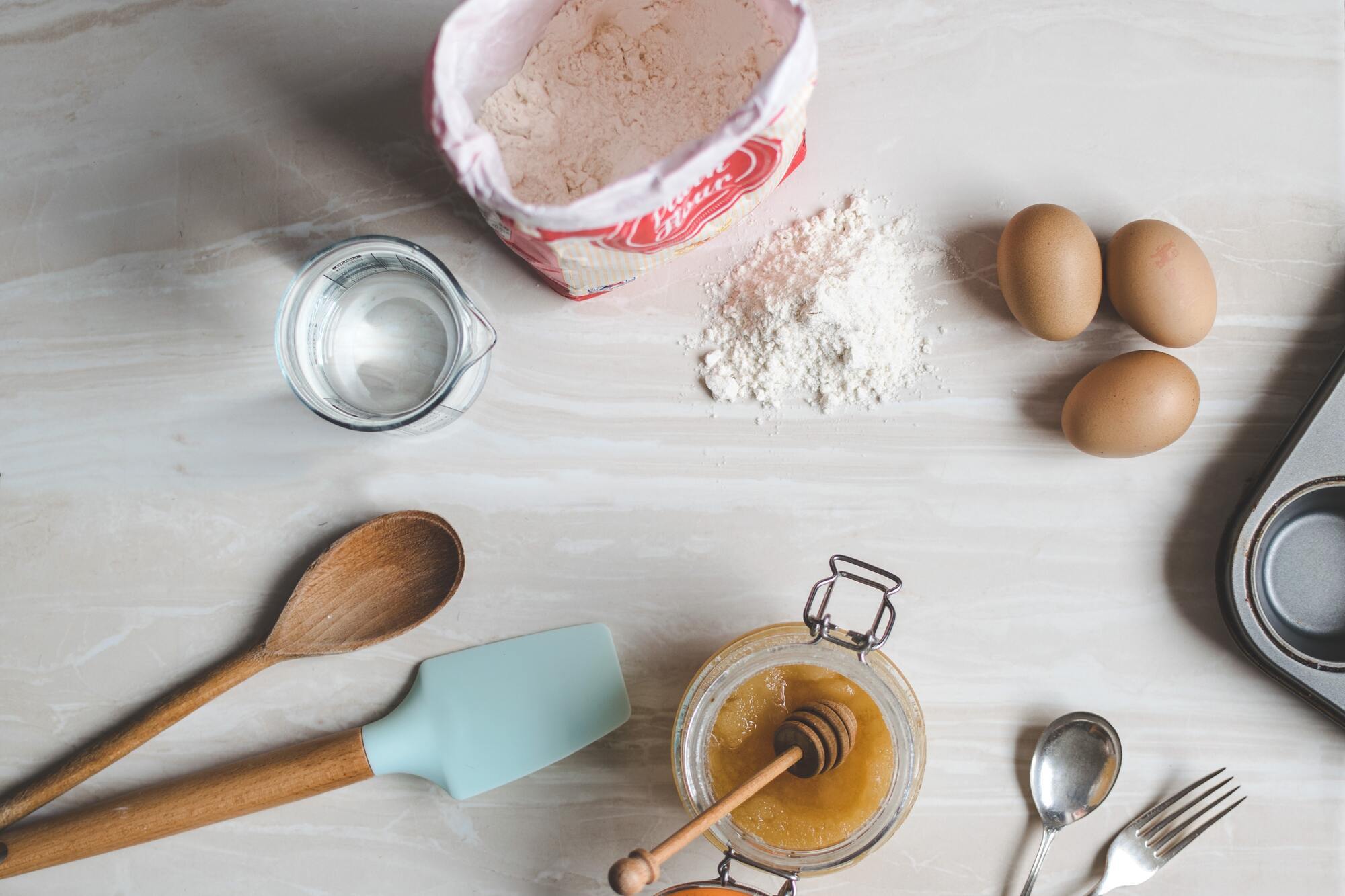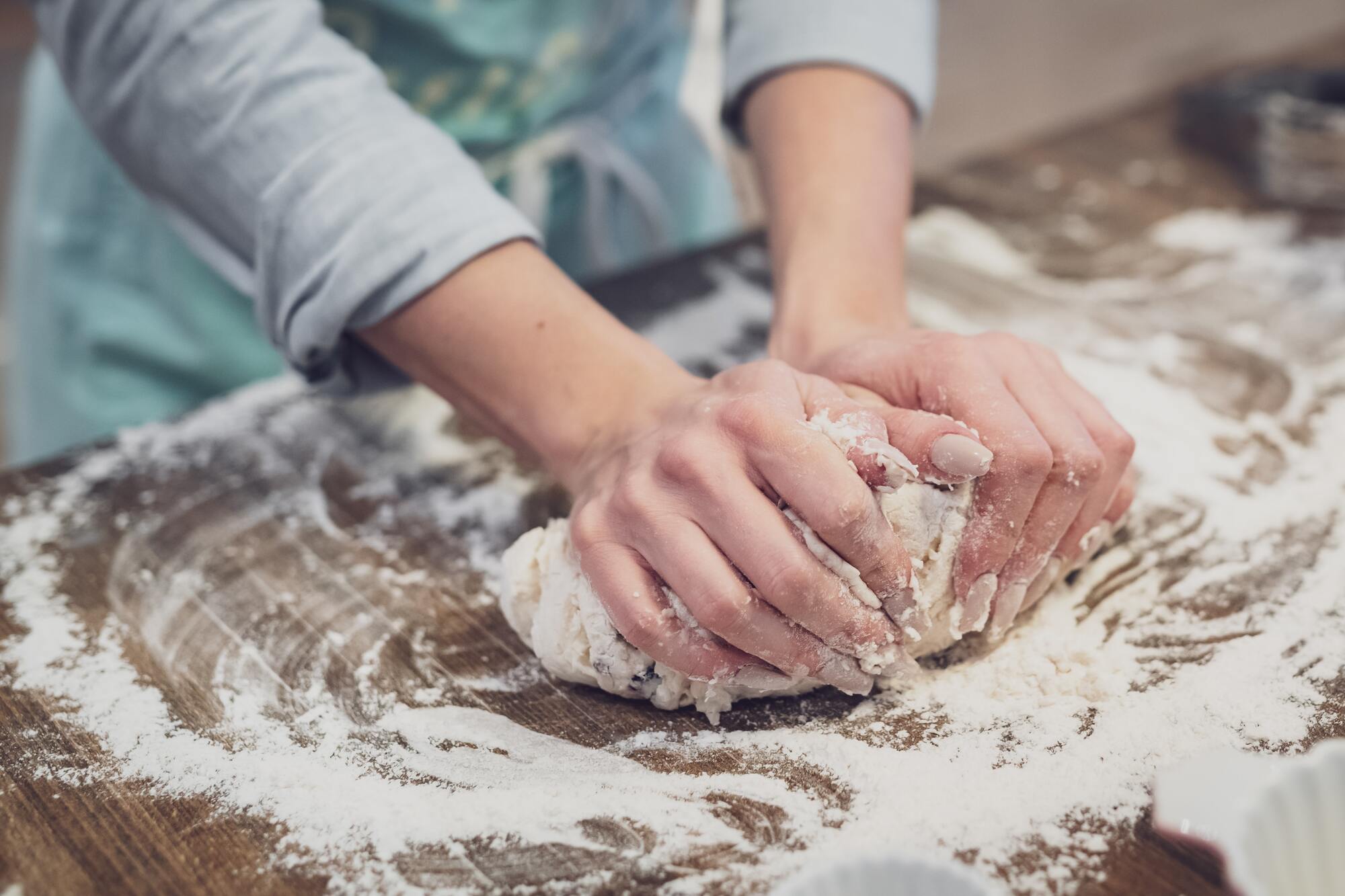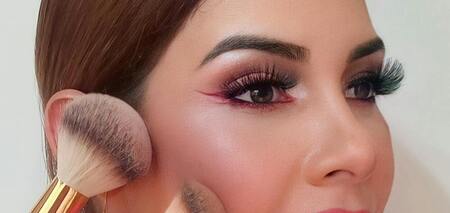LS Food
How to choose flour for dessert: tips from Liza Hlinska
Flour is a crucial ingredient in desserts and pastries. Therefore, the choice of this product should be approached with all responsibility.
In her blog, pastry chef and MasterChef judge Liza Hlinska told us how to choose the right flour in the store, as well as which variety is best suited for a particular dish.
How to choose quality flour
- Take flour packed only in paper bags. Never buy flour in plastic. Such flour does not "breathe" and eventually begins to have a musty odor.
- Flour in paper bags should be tightly sealed. In a torn package, the flour interacts with air, and bugs can grow in it.
- Pay attention to the shelf life of the flour. Flour that has been stored for a long time becomes caked, loses its flowability, and microorganisms develop in it.
- Look at the color of the flour and its homogeneity. The color of flour is not necessarily always white: some varieties are made from grains with hulls, so they are darker. The color also depends on the degree of grinding of the grains: coarse flour is darker. The flour should be free of lumps, black dots (small weeds), bugs, and larvae.
- The flour should not taste sour, sweet, or bitter. It should also not have a musty or moldy flavor.
How to store flour properly
Store flour in a cool, dry place. The shelf life of any flour is no more than 6 months. In hot weather, it is better to keep flour in the refrigerator.
- Store flour in closed jars or containers, ideally in glass. If the flour is stored in the open air, it will oxidize the oils, making it rancid. A closed container will also protect the flour from absorbing moisture and odors.
- Whole wheat flour should be stored exclusively in the refrigerator, as the natural oils in the flour quickly turn rancid at room temperature.
- If you freeze the flour for 48 hours, you are guaranteed to get rid of insects or their larvae if they were in the flour.
- Flour can be stored in the freezer. To do this, it must be well packed in airtight, moisture-proof containers. In this case, the flour can be stored for several years.
Types of flour
Usually, everyone uses wheat flour, as it is the most popular and widespread in our country. However, there are many other types of flour, and the type of flour you use has a big impact on the flavor of your baked goods or other dishes.
Wheat flour
Most housewives cook with wheat flour. It contains enough protein (gluten), so it behaves well in baking. Wheat flour is usually made from soft varieties of wheat, with durum wheat sometimes added, but not more than 20%. However, there is wheat flour made exclusively from durum wheat. It is called semolina and is used for making pasta and pizza.
Depending on the grinding and gluten content, wheat flour is divided into several grades.
- Premium flour. The whitest, most delicate, and airy flour. It is suitable for baking cake crusts, buns, muffins, and sponge cake. Higher-grade flour is also often used as a thickening agent for sauces.
- First grade flour. A slightly coarser grind than the higher grade. Since this flour contains a small amount of crushed grain hulls, the color can be from pure white to white with a yellowish or grayish tint. First grade flour is perfect for pies, pancakes, rolls, and pancakes.
- Second-grade flour. It is even coarser and darker. It comes in different colors: from light with a yellowish tint to dark gray and even brown. Such flour contains more vitamins and minerals, but it is quite difficult to bake something airy with it. Therefore, higher-grade flour is added to the second-grade flour or mixed with rye flour to make interestingly tasting and healthy pastries. This flour is good for homemade bread, gingerbread, and cookies.
- Whole wheat, wholemeal or coarse flour. This flour is made from whole wheat grains and contains much more fiber and nutrients than white flour. Whole wheat flour is low in gluten, so it is often mixed with flour of another type or another grain to make bread.
Spelt flour
A type of wheat flour made from wild wheat varieties. This flour is considered to be very healthy because its fats are easily digested and its nutritional value is higher than that of regular flour.
Rye flour
Second in popularity after wheat flour. Rye flour is made from rye, and it differs from wheat flour in color - rye flour is grayish and interspersed with the smallest particles of the grain hull. Rye flour contains almost no gluten, so it is often used in a mixture with wheat flour. Rye flour is used to make bread, pancakes, pancakes, pies, and cakes.
As for the types of rye flour, there are sown, wallpaper, hulled, and special rye flour.
- Seeded. The most delicate rye flour. Its color is white with a creamy or grayish tint.
- Special. It is not sown, so it occupies an intermediate place between sown and hulled flour.
- Hulled. Contains some grain hulls, the color of such flour is usually grayish-white or grayish-cream.
- Rough. It is like whole wheat flour: gray with interspersed darker hulls.
Buckwheat flour
This flour is made from buckwheat, it has a characteristic buckwheat flavor and a dark beige color. This flour does not contain gluten, so it is not suitable for baking in its pure form: it can only be used together with gluten-free flour. You can make buckwheat flour yourself: take buckwheat groats, rinse, dry, and grind them in a coffee grinder. This flour can be used to make pancakes and pancakes, and it can also be used to bread cutlets and add to casseroles.
Oat flour
The same flour used to make oatmeal cookies and oatmeal jelly. This flour is very easy to make at home: you just need to grind oatmeal. It is better to use oat flour together with flour containing gluten.
Corn flour
Corn flour is made from both common varieties of corn and durum corn. In the second case, it is of higher quality. Corn flour is also made in fine and coarse grinds. This flour is used to make delicious mamalyga, banosh, polenta, and corn tortillas. Its properties are similar to wheat flour, so it can be used in its pure form.
Flaxseed flour
This flour is made from ground flax seeds after the oil has been pressed out. The taste of this flour is slightly nutty, and it also binds various ingredients perfectly. Therefore, it can be used not only to bake bread, but also to add to minced meat, soups, omelets, casseroles, and for breading.
Rice flour
Rice flour is made from ground rice. Both white (steamed) and unpeeled (brown) rice can be used in the production of this flour. This flour is also gluten-free, which is why it is also recommended for allergy sufferers. Rice flour is widely used in the manufacture of baby food. It is used to make crispy bread, noodles, pancakes, pies and cakes.
Almond flour
Almond flour is considered one of the healthiest flours because it contains very few calories. This flour makes excellent pastries, and you can't make macaroons without it.
Barley flour
Barley flour contains almost no gluten, which is why it is considered a dietary product. When baking, barley flour is most often added to wheat flour, and pancakes and cookies are made from it.


